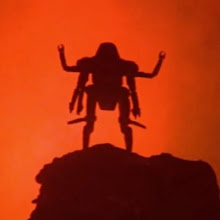Fans who tolerate the repetitiveness and ideological bankruptcy of the “Rush Hour” franchise, for example, may be testaments to the power of hope and a need for familiarity at a time when the Iraq war continues unabated, pensions and polar ice disappear, and Al Qaeda videos enjoy wider distribution than Sundance winners.1
That hardly explains the success (or existence of) Rush Hour II, released in August of 2001 or, for that matter, the sequel summer of 1989, during which we bore witness to new installments of the Indiana Jones, Lethal Weapon, James Bond, Back to the Future, Star Trek, and Ghostbusters franchises. (Perhaps those films were the result of some lingering feelings of resentment for Vietnam?) Really, there's no meaningful reason to associate the current war fatigue with Hollywood's incessant desire to produce unnecessary sequels unless, of course, you are the type of writer who must find causative association in all such things.
1. Jeannette Catsoulis, "Sequels: Stay Fresh or Die Hard," The New York Times, August 26, 2007.





No comments:
Post a Comment